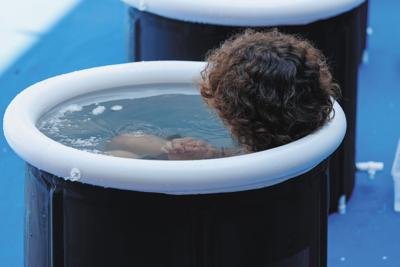There is a new health trend that has seen a steady incline in the United States over the past couple of years — cold plunges.
Better referred to as cold-water immersion, is almost exactly as it sounds; submerging your body into cold water for a period of time.
There are many different ways to participate but they vary in cost. An individual cold-plunge tub could range anywhere from $50 to $20,000 while some gyms offer cold-plunges along with a membership.
Another step could be even taken with an icy body of water during the winter or depending on the environment, but it is recommended for it to be 50 degrees or colder, so measure the temperature before entering. It is also recommended to avoid plunging into icy water that has a current.
There are many benefits that come from cold plunge, but the main one is its impact on your muscles. Mainly, it impacts reducing muscle-damage from exercise related physical activities. The less damage to the muscle will in turn result in less soreness for the following day's workout.
Research shows the cold temperature causes rapid constriction of the blood vessels. According to an article written by Andre Jagim of the Mayo Clinic Health Systems, the cold can trigger responses in your body, such as decreased metabolic activity, alterations in hormone production and blood flow and activation of the immune system.
There have also been studies showing the correlation to its impact on mental health. In a study done by the University of Stanford, students who participated in cold plunges saw a decrease in emotions such as anger, depression, tension, fatigue and confusion. Inversely, the students that participated saw an increase in positive emotions such as vigor and self-esteem.
Now what are the downsides to cold-plunges?
Other than the obvious rigid temperatures referred to as “cold shock,” the more you plunge the more comfortable you’ll become.
The other drawback comes from icy conditions where you could be susceptible to frostbite while prolonged exposure could result in hypothermia, so it is crucial to monitor the time spent in cold water.
Now, if interested in trying the cold plunges out for yourself make sure to consult a doctor beforehand. If you have health factors such as cardiovascular disease and high blood pressure, be sure to check with your primary physician to make sure there are no risks of cold plunging.






